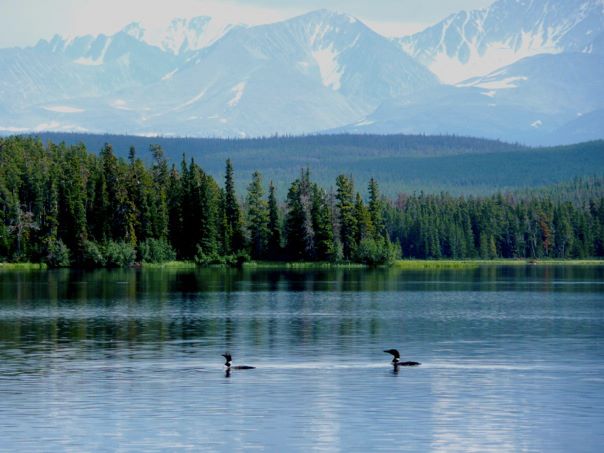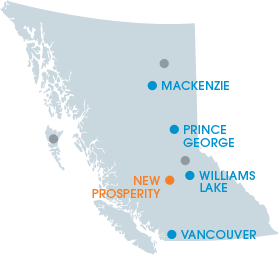 The New Prosperity Gold-Copper Project has encountered yet another setback in its struggle to obtain the political and societal approval to continue with the proposed mining project. After seeing proposals rejected by federal panels on two separate occasions, said panels “cit[ing] damages to fish and fish habitats” (Pynn), Taseko has collided with the Tsilhqot’in First Nations tribe, a people group desperately struggling to maintain the sanctity of their land, and by extension, the sanctity of their culture. As Ian Gill outlines throughout “To the Tsilhqot’in with Gloves,” the First Nations in Canada have routinely been subjected to various forms of injustice, noting that “by [his] reckoning, not a single deal that governments and industries have done with Aboriginal people in the entire history of this province has been lawful.” It is from this context, from a perspective shaped by a history that suffers from deceit, discrimination, and injustice, that the First Nations are fighting the Gold-Copper Mine, and it is from said perspective that they will continue to contest any perceived threat to their land and culture.
The New Prosperity Gold-Copper Project has encountered yet another setback in its struggle to obtain the political and societal approval to continue with the proposed mining project. After seeing proposals rejected by federal panels on two separate occasions, said panels “cit[ing] damages to fish and fish habitats” (Pynn), Taseko has collided with the Tsilhqot’in First Nations tribe, a people group desperately struggling to maintain the sanctity of their land, and by extension, the sanctity of their culture. As Ian Gill outlines throughout “To the Tsilhqot’in with Gloves,” the First Nations in Canada have routinely been subjected to various forms of injustice, noting that “by [his] reckoning, not a single deal that governments and industries have done with Aboriginal people in the entire history of this province has been lawful.” It is from this context, from a perspective shaped by a history that suffers from deceit, discrimination, and injustice, that the First Nations are fighting the Gold-Copper Mine, and it is from said perspective that they will continue to contest any perceived threat to their land and culture.
For a brief moment, both of the invested stakeholders, Taseko and the Tsilhqot’in, seemed to be satisfied. The Tsilhqot’in tribe had witnessed a historic, “landmark Supreme Court of Canada ruling, [which] found that the Tsilhqot’in people have title to 1,750 square kilometres of land west of Williams Lake” (Pynn). At the same time, the proposed site for the New Prosperity Gold-Copper Project rested outside the boundaries of the recently affirmed title area. However, Tsilhqot’in plan to declare the site to be within a newly formed tribal park, a park which would prohibit large-scale industrial mining within its boundaries. Without question, this a massive setback to Taseko, incorporating aspects of both political and socio-cultural external threats. At this point it should be considered a given that the mining site should not be within the 1,750 square kilometres recently granted to the Tsilhqot’in – as it would infringe on both their social and legal rights – but it is within reason for Taseko to contest this designation of a tribal park, which would effectually prevent the construction and implementation of their proposed mine. There doesn’t seem to be legal affirmation of the “designation of full protection status” (Pynn) as of yet, so it is reasonable for Taesko to continue to expect to implement their proposed mine, once they ensure the environmental impact will be within legal boundaries. It will be interesting to see how the government reacts to this latest development in the struggle between Taseko and the Tsilhqot’in, a struggle representative of the ongoing clash of cultures that has provide the backdrop to the history of British Columbia.
N.d. West Coast Environmental Law. Web. 7 Oct. 2014.
N.d. Taesko Mines. Web. 7 Oct. 2014.
Pynn, Larry. “Tsilhqot’in Set to Declare Site of New Prosperity Mine a Tribal Park.” Www.vancouversun.com. Vancouver Sun, 11 Sept. 2014. Web. 07 Oct. 2014. <http://www.vancouversun.com/news/metro/Unilateral%2Bpark%2Bdeclared%2BTsilhqot%2Bincludes%2BProsperity%2Bmine/10192766/story.html>.
Constantinides, Dimitris. “Understanding Pest Analysis with Definitions and Examples.” PESTLE Analysis. N.p., 31 Dec. 2013. Web. 07 Oct. 2014. <http://pestleanalysis.com/pest-analysis/>.
“News | New Prosperity Gold-Copper Project.” New Prosperity GoldCopper Project. N.p., n.d. Web. 07 Oct. 2014. <http://newprosperityproject.ca/>.
Gill, Ian. To the Tsilhqot’in, with Gloves. The Tyee. N.p., 26 July 2014. Web. 06 Oct. 2014. <http://thetyee.ca/Opinion/2014/07/26/Tsilhqotin-With-Gloves/>.
